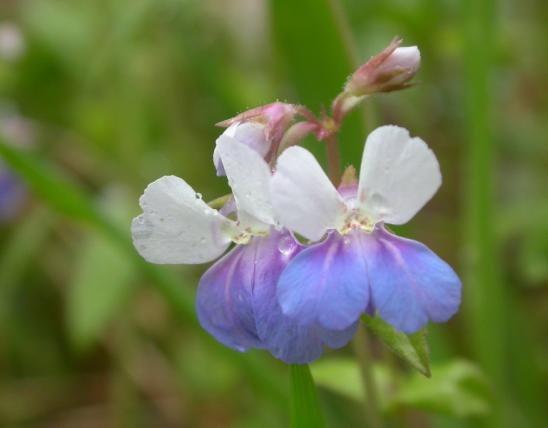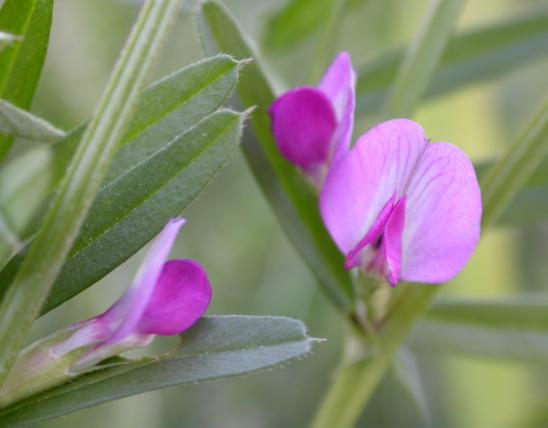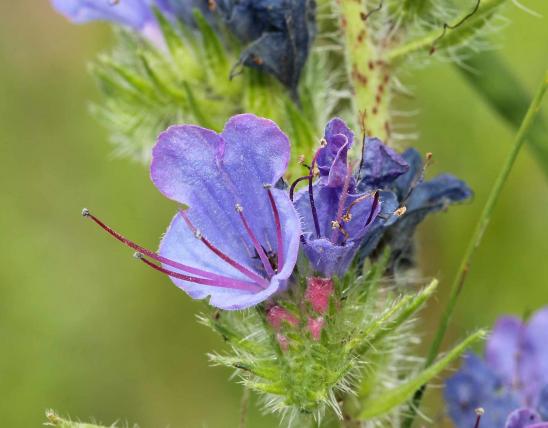
Common dayflower is an herbaceous annual plant that sprawls along the ground like a vine, often rooting at the nodes. Flowers last for only a day, emerging from a boatlike sheath, one at a time. There are 3 petals: 2 large blue petals above, plus 1 much smaller white or greenish-white petal below. There are 6 stamens (the male parts): 3 on short stems are sterile (these are called staminodes), and 3 on longer stems produce pollen. Blooms May–October. Leaves alternate, clasping the stem, narrowly ovate to lance-shaped.
Similar species: There are 4 more dayflowers in the genus Commelina recorded in Missouri. They have similar characteristics.
Height: 1–2 feet.

Statewide.
Habitat and Conservation
This species of dayflower is native to eastern Asia and has been introduced nearly worldwide. It occurs in disturbed soils near waterways, ditches, low woods, bottomlands, waste places, cultivated fields, gardens, near dwellings, and moist roadsides and railroad embankments.
Status
Dayflowers and spiderworts are in the same family. Most of the 600 to 700 species in the Commelinaceae are tropical or subtropical. You are probably familiar with houseplants called “wandering Jews” that have all-purple or purple-striped leaves, juicy stems, and a sprawling habit similar to dayflower. The flowers of wandering Jews have three equal petals, though, and they’re in the same genus as spiderworts.
Human Connections
A fast-growing but shallow-rooted weed that annoys gardeners, but a few people cultivate it as an ornamental. In Asia, it is cooked and eaten as a green vegetable. In the 18th and 19th centuries, blue pigment from the flowers was used to color many of Japan’s famous woodblock prints.
Ecosystem Connections
Bees and other insects visit the flowers, which lack nectar; they are attracted in part by the showy yellow, though sterile, staminodes. Other insects eat the foliage, which deer and other mammals relish as well.





























